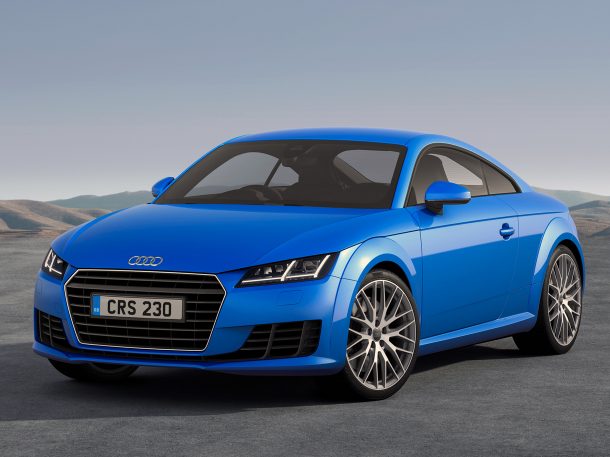Meet new supercomputer – sorry Audi TT!

THE days when cars were simple and could be repaired with a few spanners and a hammer are long gone!
Nowadays cars have more computing power than NASA could have dreamt of in the 1960s.
And a typical example of this is the all-new Audi TT, which is available to order now.
This is a case of motoring supercomputer meets state-of-the-art sports car.
Prices begin at £29,770 OTR ahead of first deliveries in December.
Enveloping its stunning all-digital virtual cockpit and advanced new chassis in a beautiful new body that is unmistakably TT but also distinctly contemporary, the third generation car looks set to incite another quiet revolution in its class. It will even set the agenda in terms of efficiency – despite appropriate performance the new 184PS ultra version will be capable of in excess of 67mpg with CO2 emissions of just 110g/km.
Two specification levels – Sport and S line – will initially be offered in the UK for the all-new TT. Both include the Audi virtual cockpit, which is based around a 12.3-inch, high resolution LCD display that completely fills the driver’s instrument binnacle and replaces the traditional analogue dials. Its brilliantly sharp images are courtesy of a powerful Tegra 30 graphics processor from Nvidia’s Tegra 3 series.
Drivers can choose between two display modes: In the classic view, the speedometer and rev counter are in the foreground; in “infotainment” mode the virtual instruments are smaller. The space that becomes free as a result provides ample room for other functions, such as the navigation map. At the lower edge of the Audi virtual cockpit, the displays for outside temperature, time and mileage are permanently visible. Warning or information symbols are also displayed there.
Interior technology highlights from the equipment list for Sport models also include the Multi Media Interface with the MMI touch pad for fingertip data entry, navigation preparation, Audi Music Interface and Bluetooth connectivity, the Audi drive select adaptive dynamics system and keyless go. Complementary comforts also include Alcantara and leather combination upholstery for the standard sports seats and manual air conditioning with controls integrated into the air vents in another break with convention. Outside the cabin, 18-inch 10-spoke alloy wheels, sports suspension, xenon headlamps with LED daytime running lights and a speed-dependent active rear spoiler all also feature as standard.
As a 2+2 seater, it is a sports car that is suitable for everyday use, with a load area capacity of 305 litres – 13 litres more than before – which can be increased to 712 litres by folding the rear seat backrests forwards.
The remarkable blend of performance and economy offered across the TT range is partly attributable to its advanced Audi Space Frame composite construction, which has been carried over and further evolved for the all-new model. Blending steel with a high proportion of lightweight aluminium in areas such as the side sills and side sections, roof, bonnet, doors and hatch lid has helped the 2.0-litre TFSI model to tip the scales at an impressive 1,230kg – 50kg less than its equivalent predecessor.
The 2.0 TFSI – one of two engine options available at launch – is suitably technologically advanced in keeping with its new habitat. The EU6-compliant four-cylinder unit combines direct and indirect fuel injection for optimal combustion, the Audi valvelift system (AVS) for precise valve stroke control on the exhaust side and thermal management, which uses a rotary valve module and an exhaust manifold integrated into the cylinder head.
In the TT the high-tech unit is combined with either front-wheel-drive and a six-speed manual gearbox or quattro all-wheel-drive and a six-speed S tronic twin-clutch transmission. Developing peak torque of 370Nm from 1,600 to 4,300 rpm, it powers the front-wheel-driven version from 0 to 62mph in 6.0 seconds, and on up to a top speed of 155mph. Combined economy is a creditable 47.9mpg, delivered with CO2 output of 137g/km.
To minimise stress in everyday driving, a portfolio of advanced electronic aids is also available for the new TT. Audi side assist uses rear-mounted radar sensors to help drivers change lane more safely; camera-based traffic sign recognition can alert the driver to speed limits even when they have been temporarily imposed; the park assist system with display of surroundings independently guides the car into suitable spaces; and the Audi pre sense basic safety system takes protective action such as closing the windows and tensioning the seatbelts if sensors detect an impending collision.
Last but not least, Audi active lane assist helps the driver if required by steadily correcting steering or warning if there is a danger of unintentionally drifting out of lane – this feature is standard for the 2.0 TFSI model and optional for the 2.0 TDI ultra.
